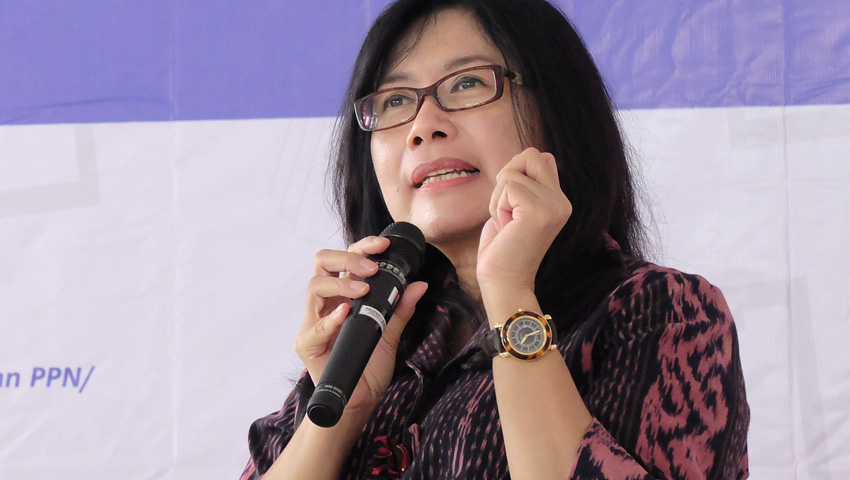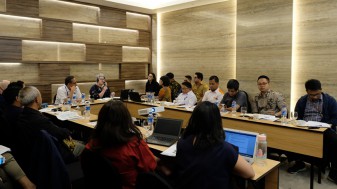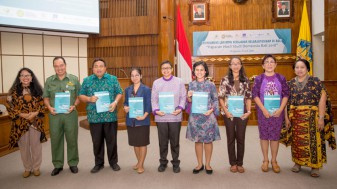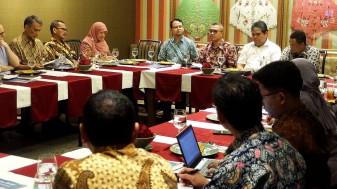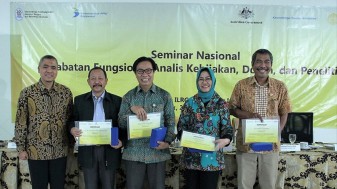Jaleswari Pramodhawardani is the resource person on the Nulistik Forum Discussion, held by Tempo Institute and Knowledge Sector Initiative in Jakarta, October 20, 2015. She has experience both as a researcher and as part of a policy-making team for the current Government. During the session, she provided advice on writing effective policy briefs and reviewed draft policy briefs submitted by some of the participants.
How is the idealization of researcher-policy makers relationship in communicating research results and recommendations?
Basically, the style of leadership of the government also should be of particular concern (of researchers). Each president is very likely to have a different style in the policy making process. This means researchers must not ignore textual and contextual factors of research.
What are the obstacles commonly encountered by researchers in making policy briefs to be delivered to the decision makers?
There are three things that are often faced by researchers when making a policy paper. First, researchers are still positioning themselves as critics of the policy. Ideally, researchers should position themselves as parties who will give recommendations based on research results and objective analysis.
Second, there is a lack of sense of belonging among researchers towards policy papers they made. The result is the writing style of the paper is monologue and linear so it is not attractive. This problem is exacerbated by the assumption among some researchers when the policy paper is finished, the job is done. In fact, there is another more important process which is to guard the recommendation until it becomes a concrete policy.
Third, researchers are stammering (not skillful) in squeezing the results of their research which is so rich in data into the only 2-4 page length attachment.
To what extent the role of policy briefs in policy making by the government?
A policy paper is basically a creative work. The substance is based on an objective and comprehensive research. However, the research works will mean nothing if researchers are not creative in packaging them. Thus, the packaging of the policy paper is also important so that stakeholders pay attention to the policy paper that you make. In essence, the policy paper should be easy to read and necessary.
How ?
An effective and efficient policy paper is not a paper consisting of dozens of pages such as scientific papers. Its length can be just 2-4 pages or 1500 characters. But the title should be eye catching to attract attention of the readers so that they pick up your policy paper among dozens of others. Propose also a straightforward title targeting issues that you discuss in the policy paper.
The contents of the policy paper also should not be made carelessly. You should consider attention and interests of the stakeholders involved in the policy paper. Not less important is the presentation of the problems and try your best to make sure that the problems brought about directly refers to the level of regulation or implementation.
In addition to policy briefs, is there any other strategies that is able to bridge communication between researchers and policy makers?
Yes of course, that is to guard the policy paper until it becomes an implementable policy. The trick is to hold active discussions with various stakeholders and write in the media. Precisely, this stage is more importance because if researchers merely present policy papers and then consider that the job is done the ideas in the paper will mean ‘nothing'. With discussions, researchers together with policy makers can elaborate the ideas contained in the policy paper.
How is your experience in preparing policy briefs for President Joko Widodo?
A policy paper reaching the desk of the president should not be more than two pages. The initial part directly state policy recommendations. The second part is the argument of each recommendation. Usually, the recommendation is operational in nature.

